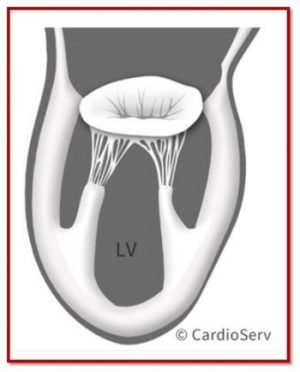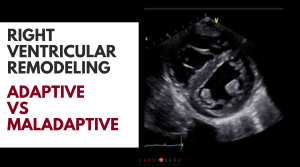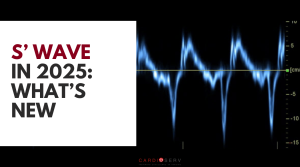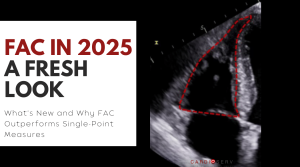Last Updated on January 30, 2024 by Hannes van der Merwe
Last week we wrapped up our right heart blog series. Be sure to keep an eye out for our Right Heart E-Book that will be available soon!
This week, we are kicking off our mitral regurgitation (MR) blog series! The ASE, recently released updated guidelines, for the proper methods to quantify MR. We at CardioServ, want to help break it down, into a more enjoyable learning process. Our goal is to help you, incorporate these methods into daily scanning practices! We look forward to feedback and comments, as we are all here to learn and grow together!In order to identify pathology of a valve, we must be familiar with the basic anatomy first! Can you name five components of the mitral valve apparatus? Read on, and master mitral valve anatomy!MITRAL VALVE FUNCTION
- Forward towards left ventricle (LV) in diastolePrevents backflow towards left atrium (LA) in systole
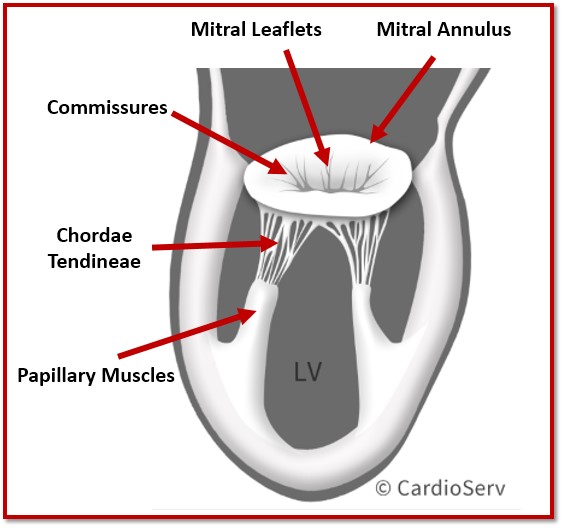
1. Mitral Annulus2. Mitral Leaflets3. Commissures4. Chordae Tendinae5. Papillary Muscles
1. MITRAL ANNULUSMitral Annulus: Anatomical structure that separates the LV & LA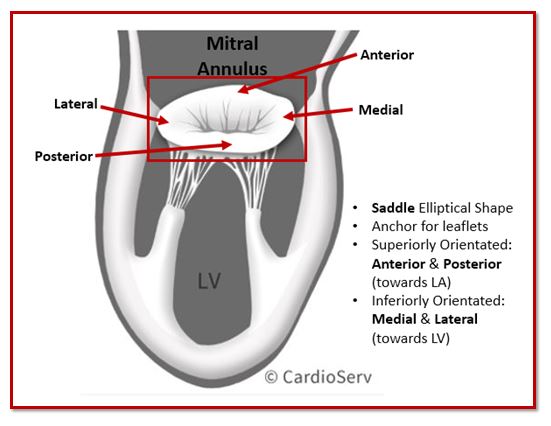 2. MITRAL LEAFLETSMitral Leaflets & Scallops: Thin and pliable leaflets that contain scallops which represent segmental markers.
2. MITRAL LEAFLETSMitral Leaflets & Scallops: Thin and pliable leaflets that contain scallops which represent segmental markers.- Anterior Leaflet (AML): larger & thicker
- Dome-shapedScallops: A1 (lateral), A2 (central), A3 (medial)
- Crescent shapedScallops: P1 (lateral), P2 (central), P3 (medial)
 3. COMMISSURESCommissures: 2 specific sites where the leaflets insert and join into mitral annulus
3. COMMISSURESCommissures: 2 specific sites where the leaflets insert and join into mitral annulus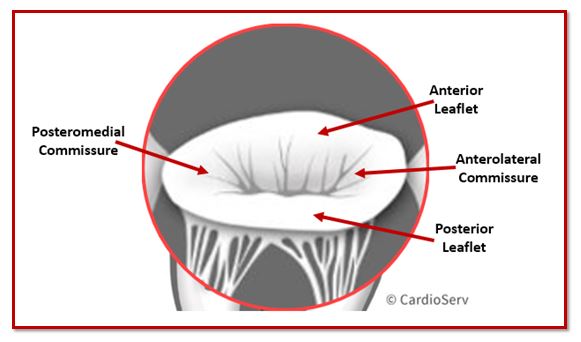 4. CHORDAE TENDINAEChordae Tendinae: Fibrous strings that attach specific portions of mitral leaflets to papillary muscle tips
4. CHORDAE TENDINAEChordae Tendinae: Fibrous strings that attach specific portions of mitral leaflets to papillary muscle tips Three classified types of chordae tendinae based on location of insertion:
Three classified types of chordae tendinae based on location of insertion:
- Function to maintain coaptation of leafletsFailure of primary leads to rupture or elongated chordaeCause development of prolapse or flail leaflet
- Provides support length to leafletsThicker & longerCan rupture & not damage coaptation or develop regurgitation
- Function as structural support
- Dual blood supply (LAD & Cx)
- Single blood supply (Either RCA or LCX)Prone to injury from MI due to single blood supply
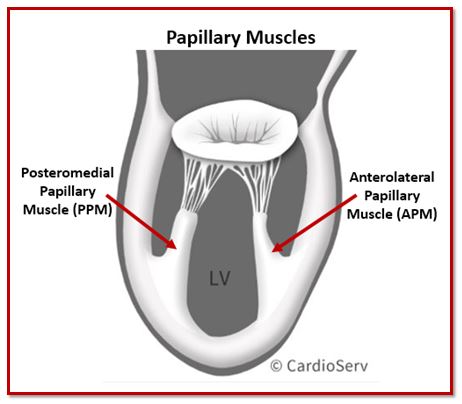
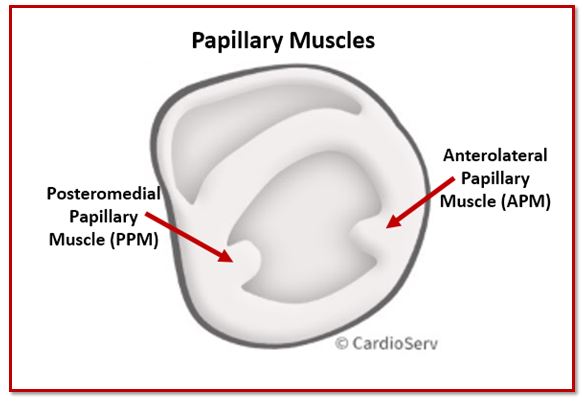 MITRAL VALVE ZONESThe mitral apparatus has very specific details that make up the large picture of the ‘mitral valve’. If we zoom in on the mitral leaflets from the atrial surface, we can identify two zones that are used for describing location of pathology seen.
MITRAL VALVE ZONESThe mitral apparatus has very specific details that make up the large picture of the ‘mitral valve’. If we zoom in on the mitral leaflets from the atrial surface, we can identify two zones that are used for describing location of pathology seen.- Crucial area to observe in assessment of mitral valve function
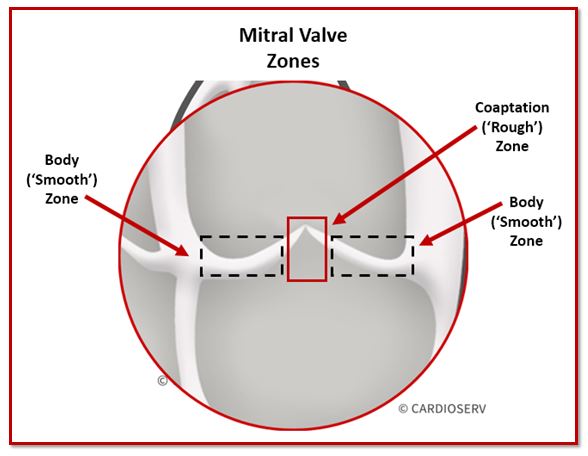 KEY TIPS TO TAKE AWAY
KEY TIPS TO TAKE AWAY- Anterolateral papillary muscle = lateral scallops (A1, P1) & lateral half of A2, P2Posteromedial papillary muscle = medial scallops (A3, P3) & medial half of A2, P2
 Andrea Fields MHA, RDCSStay Connected: LinkedIn, Facebook, Twitter, Instagram References: Prokšelj, K. (2015). Echocardiography Of The Mitral Valve. International Symposium MITRAL VALVE DISEASES IN CHILDREN AND ADULTS. doi:10.5644/pi2017.168.03Zoghbi, W. A., MD, Adams, D., RCS, RDCS, FASE, & Bonow, R. O., MD. (2017). Recommendations for Noninvasive Evaluation of Native Valvular Regurgitation. JASE,30(4), 318-334. Retrieved June 6, 2017.Zamorano, J. L., MD, & Badano, L. P. (2011). EAE/ASE Recommendations for the Use of Echocardiography in New Transcather Interventions for Valvular Heart Disease. JASE,24(9), 957-960. Retrieved June 6, 2017.
Andrea Fields MHA, RDCSStay Connected: LinkedIn, Facebook, Twitter, Instagram References: Prokšelj, K. (2015). Echocardiography Of The Mitral Valve. International Symposium MITRAL VALVE DISEASES IN CHILDREN AND ADULTS. doi:10.5644/pi2017.168.03Zoghbi, W. A., MD, Adams, D., RCS, RDCS, FASE, & Bonow, R. O., MD. (2017). Recommendations for Noninvasive Evaluation of Native Valvular Regurgitation. JASE,30(4), 318-334. Retrieved June 6, 2017.Zamorano, J. L., MD, & Badano, L. P. (2011). EAE/ASE Recommendations for the Use of Echocardiography in New Transcather Interventions for Valvular Heart Disease. JASE,24(9), 957-960. Retrieved June 6, 2017.

